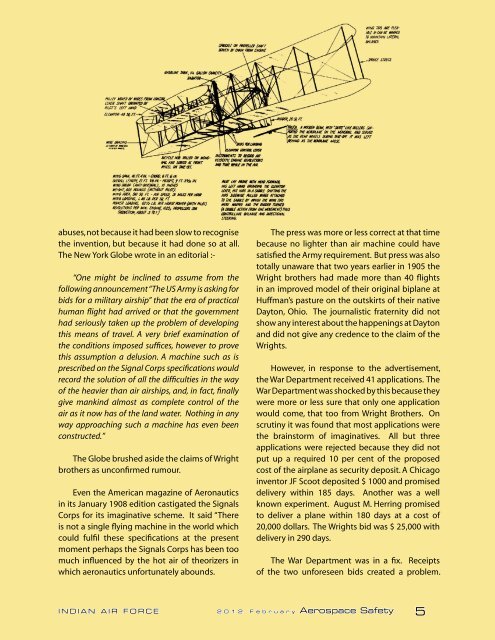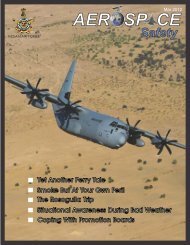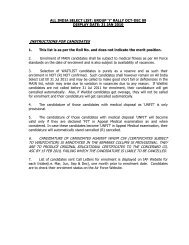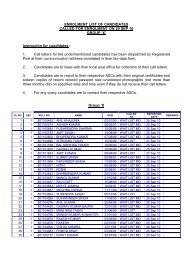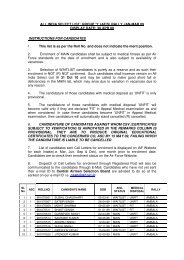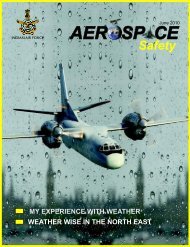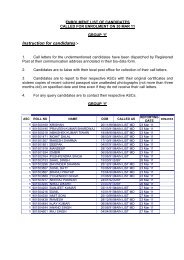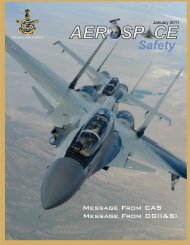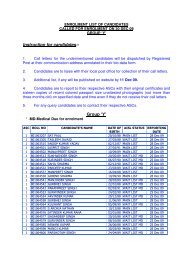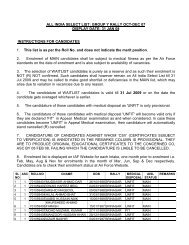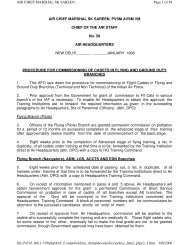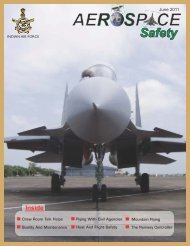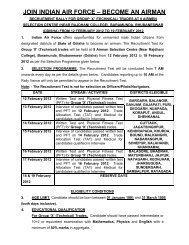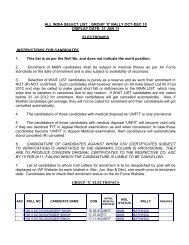final feb cover - Indian Airforce
final feb cover - Indian Airforce
final feb cover - Indian Airforce
You also want an ePaper? Increase the reach of your titles
YUMPU automatically turns print PDFs into web optimized ePapers that Google loves.
abuses, not because it had been slow to recognise<br />
the invention, but because it had done so at all.<br />
The New York Globe wrote in an editorial :-<br />
“One might be inclined to assume from the<br />
following announcement “The US Army is asking for<br />
bids for a military airship” that the era of practical<br />
human flight had arrived or that the government<br />
had seriously taken up the problem of developing<br />
this means of travel. A very brief examination of<br />
the conditions imposed suffices, however to prove<br />
this assumption a delusion. A machine such as is<br />
prescribed on the Signal Corps specifications would<br />
record the solution of all the difficulties in the way<br />
of the heavier than air airships, and, in fact, <strong>final</strong>ly<br />
give mankind almost as complete control of the<br />
air as it now has of the land water. Nothing in any<br />
way approaching such a machine has even been<br />
constructed.”<br />
The Globe brushed aside the claims of Wright<br />
brothers as unconfirmed rumour.<br />
Even the American magazine of Aeronautics<br />
in its January 1908 edition castigated the Signals<br />
Corps for its imaginative scheme. It said “There<br />
is not a single flying machine in the world which<br />
could fulfil these specifications at the present<br />
moment perhaps the Signals Corps has been too<br />
much influenced by the hot air of theorizers in<br />
which aeronautics unfortunately abounds.<br />
The press was more or less correct at that time<br />
because no lighter than air machine could have<br />
satisfied the Army requirement. But press was also<br />
totally unaware that two years earlier in 1905 the<br />
Wright brothers had made more than 40 flights<br />
in an improved model of their original biplane at<br />
Huffman’s pasture on the outskirts of their native<br />
Dayton, Ohio. The journalistic fraternity did not<br />
show any interest about the happenings at Dayton<br />
and did not give any credence to the claim of the<br />
Wrights.<br />
However, in response to the advertisement,<br />
the War Department received 41 applications. The<br />
War Department was shocked by this because they<br />
were more or less sure that only one application<br />
would come, that too from Wright Brothers. On<br />
scrutiny it was found that most applications were<br />
the brainstorm of imaginatives. All but three<br />
applications were rejected because they did not<br />
put up a required 10 per cent of the proposed<br />
cost of the airplane as security deposit. A Chicago<br />
inventor JF Scoot deposited $ 1000 and promised<br />
delivery within 185 days. Another was a well<br />
known experiment. August M. Herring promised<br />
to deliver a plane within 180 days at a cost of<br />
20,000 dollars. The Wrights bid was $ 25,000 with<br />
delivery in 290 days.<br />
The War Department was in a fix. Receipts<br />
of the two unforeseen bids created a problem.<br />
INDIAN AIR FORCE 2 0 1 2 F e b r u a r y Aerospace Safety 5


